Notes for MASS Zoom Meeting on December 11, 2020
We had another good turnout for our 70th meeting and the 6th one using Zoom. Keith, Phil, Silvio, Hank, Beth and Chad joined me in a 2 hour 15 minute summary of events happening in space and astronomy.
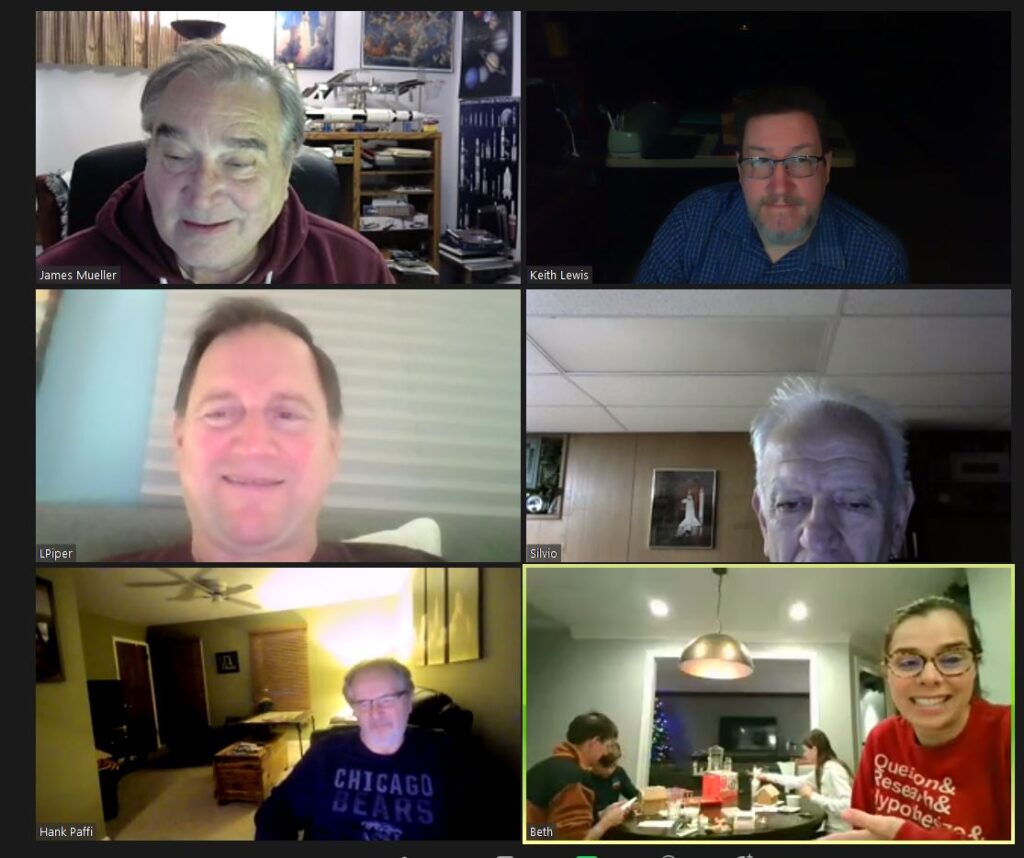
First order of business was to announce the entries for our next MASS Prize, this time it is the number of people going into space (50 miles or higher) during 2021. From high to low the guesses are: Beth 63; Harry 54; Carol 50; Keith 42; Dean 40; Phil 36; Hank 32; myself 27; Ed 21; and Silvio 6. I’ve put the progress spreadsheet that I will update monthly under the “MASS On Commercial Crew” section of the website and also put a table and bar chart showing historically (1961 to 2020) how many people in the past have gone into space each year. Recently, during the last 2 years, there have been 12. Over the last 7 years, the number has averaged that same amount of 12. In 1985, during the hey day of the Space Shuttle, we saw the highest number with 63. Just after that year, the number plummeted due to the Challenger accident. The lowest number was in 1967 with only 1 person. There wouldn’t have been any that year if I didn’t count an X-15 pilot who exceeded the 50 mi height. By the way, the X-15 had a total of 199 flights with 12 different pilots in 3 different planes. Of those flights, only 13 went higher than 50 miles. Those flights were done by 8 pilots who earned their astronaut wings from the Air Force. Potential flights in 2021 can come from Russia with the Soyuz capsule, from the US with the Dragon, Starliner and Orion capsules, from China with its Shenzhou and new capsule under development, from India a country that plans manned flights some time in the future, and lastly from sub-orbital tourist flights from Virgin Galactic and Blue Origin. Virgin Galactic has said they want to fly up to 400 times in a year. With 6 tourists, a pilot and a co-pilot on each flight, they could put 3200 people in space per year! So far, the most they have flown was a pilot, co-pilot, and 1 employee in February 2019. They tried their first flight from New Mexico, on Saturday December 12, 2020, but the rocket shut down almost immediately after being dropped from its carrier plane at 50,000 feet. There was only a pilot and co-pilot on board and they glided SpaceShip2, VSS Unity, down to a safe landing.
For the meeting, we had to lead with the most interesting event from last Wednesday, December 9, 2020. The 12.5 km high flight of the SN8 StarShip prototype from SpaceX down in Boca Chica, TX. It ended with a big boom but according to SpaceX it was a successful test. The 50 meter (164 foot) tall stainless-steel craft launched on its 3 Raptor engines, cut the engines, went into its controlled belly-flop descent, re-lit 2 of its engines and then swiveled for a tail-end landing. But that is when things went awry. The Starship had low fuel pressure and the engines couldn’t provide the necessary thrust for a soft landing. The prototype collapsed and exploded. Scott Manley had the best analysis of the flight. In the future, when the StarShip is placed upon the enormous Super Heavy first stage, it will be a beast of a rocket capable of putting 150 metric tons into Low Earth Orbit (LEO), more than the Saturn 5. Development of StarShip has been phenomenally quick. NASA has to be aware that if this totally reusable rocket starts flying, it is going to make the SLS rocket obsolete and much too expensive to launch.
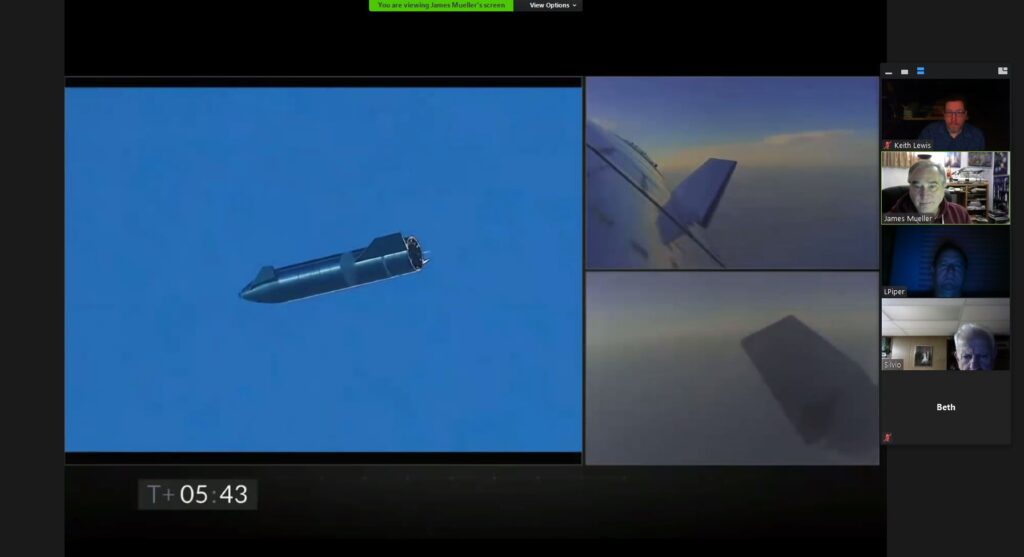
If you are interested in StarShip and how it relates to SpaceX’s current rocket, the Falcon 9, here is the best summary, The “EveryDay Astronaut” has a great 1 hour discussion of the subject.
Other recemt news was the passing of Chuck Yeager on Monday, December 7, 2020 at 97 years of age. He had a phenomenal career as a test pilot and was the first to break the sound barrier in 1947. I was amazed he never flew the X-15 but as a World War II pilot maybe he was already a little to old.
The Arecibo Radio Observatory in Puerto Rico, the US largest radio telescope, has collapsed and is beyond repair. The first cable snapped at the end of August and a second cable snapped around November 8. Scientists said it wouldn’t be rebuilt. The telescope researches Near Earth Asteroids (NEAs) by bouncing radio signals off them. It also studies pulsars, which are dead stars that emit very precise pulses of radio energy. China has recently built a larger dish at 500 m beating Arecibo’s size of 305 m (1000 ft). But Arecibo could transmit as well as receive radio signals. The last straw for the observatory came on December 1, the same day a China’s lunar sample return mission landed on the moon, the central platform collapsed. Amazingly, the was a drone flying near the platform just as it was collapsing and captured video of the event. It was reported that the observatory was on a shoe-string budget of only $12 million under NSF. It looks like recent hurricane and earthquake damage contributed to the collapse of the 57 years old structure. The radio telescope was iconic and was featured in the movie “Contact” with Jodie Foster. The US’s next largest radio telescope is the 100 meter in Green Bank, West Virginia and after that it is the 70 meter dish at Goldstone near Barstow, Arizona. The latter dish can also send radar signals but it is used by the military and is also part of NASA’s Deep Space Network so its availability is limited.
Today, December 11, is the 48 anniversary of the landing of the last Apollo mission, Apollo 17, on the moon with Gene Cernan in 1972. That mission launched from Earth on December 7, took off from the moon on December 14 and splashed down on December 19.
Remember, the Jupiter/Saturn conjunction is coming up on the night of December 21. On that night the 2 planets will be only 1/4 the moon’s diameter apart. Carol and I saw the planets last night, December 10, at 5:20 PM fairly low in the southwest. They were about 2 moon diameters apart. For my tired old eyes, it took me a couple of minutes to find Saturn because it is much fainter than Jupiter but Carol saw both of them immediately. She does have the sharper eyes in the family. I’m betting that finding Saturn will only get more difficult as the 2 planets get nearer to each other.
It’s the time of year for yearly summary articles and the Planetary Society just put out their “best of 2020” list. Best solar system picture was from the Juno probe orbiting Jupiter, the most exciting planetary science moment was the sampling of the asteroid Bennu by the Osiris-Rex spacecraft, Osiris-Rex also won for best planetary mission of the year, best LightSail picture was a stunning image of the earth behind the LightSail spacecraft, the most exciting upcoming mission is the James Webb Space Telescope (JWST) and the best human space flight picture is of the Dragon CREW1. There is a great 4 minute video of how JWST will deploy once it is launched. The telescope will undergo a couple of months of nail-biting events before it is ready for science.
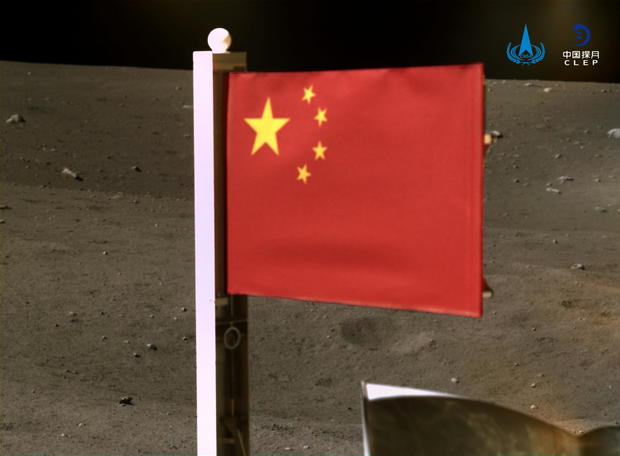
The Chinese Chang’e 5 mission to return a sample of the moon was going to be my lead story until the SN8 took flight. Scott Manley has a great 9 minute summary of the mission. His video of the landing is even better than what the Chinese released. This mission includes an orbiter with a return module, a descent and ascent vehicle, a scoop for obtaining a sample of lunar regolith and a 2 meter (6.5 foot) drill for a core sample.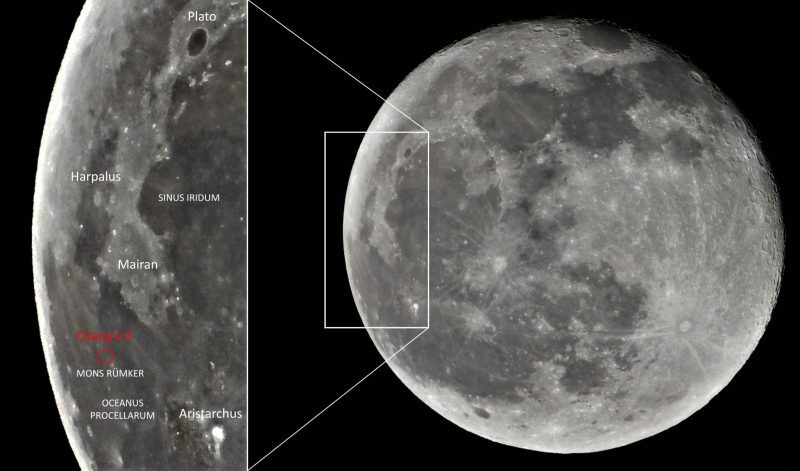 The probe launched on November 24, 2020, landed on the Rumker plateau area in Oceanus Procellarum (Ocean of Storms), 52 degrees W, 43 degrees N, on December 1. This location is in the far upper left of the moon as seen from the northern hemisphere. The moon map below has the better orientation for how we see the moon. Scientists are unsure whether the Rumker area, which is a 70 km wide and 500 meter high dome of basalt, is 3 billion or 1 billion years old. Samples will hopefully answer the age uncertainty. Use the map below to follow the directions to find the Chang’e 5 landing area. The “poodle on the moon” is on the right side of the moon and the “poodle” is formed from Mare Serenitatis (the head), Mare Vaporum (the snout), Mare Tranquillitatis (the chest), Mare Fecunditatis (the hind quarters), Mare Nectaris (the front legs) and Mare Crisium (the fur ball tail’s end).
The probe launched on November 24, 2020, landed on the Rumker plateau area in Oceanus Procellarum (Ocean of Storms), 52 degrees W, 43 degrees N, on December 1. This location is in the far upper left of the moon as seen from the northern hemisphere. The moon map below has the better orientation for how we see the moon. Scientists are unsure whether the Rumker area, which is a 70 km wide and 500 meter high dome of basalt, is 3 billion or 1 billion years old. Samples will hopefully answer the age uncertainty. Use the map below to follow the directions to find the Chang’e 5 landing area. The “poodle on the moon” is on the right side of the moon and the “poodle” is formed from Mare Serenitatis (the head), Mare Vaporum (the snout), Mare Tranquillitatis (the chest), Mare Fecunditatis (the hind quarters), Mare Nectaris (the front legs) and Mare Crisium (the fur ball tail’s end).

Hopefully you will now always see the poodle on the moon. To locate the landing area, find the “poodle dog” on the moon. The large circular feature to the left of the poodle’s head is Mare Imbrium (Sea of Rains). The dark area to the left of Mare Imbrium is Oceanus Procellarum. The probe landed way in the top right of Oceanus Procellarum. The probe was able to obtain a 3.3 lb scooped sample of regolith and a 1.1 lb core sample. Within 19 hours of landing, the ascent module launched back into lunar orbit and docked with the orbiter. The samples were loaded into a capsule that looks like a Russian Soyuz capsule and sent back to earth. The sample should arrive back on Earth around December 16. Here is a fantastic detailed picture on this site. Click on the highlighted text, “panoramic surface image” to zoom into the detail. The moon seems to have more color than the Apollo pictures. This mission is quite a technical feat for China. Russia had 3 sample return missions from the moon in the 1970’s but their total return was only a total 326 grams (12 oz). The US got 842 lbs (382 kg) of rocks and soil from the 6 Apollo missions. China is spending 2.5% of their GDP on research & development compared to the US 2.8% and the United Kingdom 1.7%. I think China will be our main competitor for the return to the moon effort. Remember, they also have a functioning rover on the far side of the moon. This is the first sample attempt since Russia returned 6 oz (170 grams) of lunar soil in August 1976.
China’s successful moon mission brought up the question, should the United States pursue it’s “return to the moon” program in cooperation with China? The Washington Examiner editorial thinks not. They mention that Louis Friedman of the Planetary Society wants us to cooperate. But the author notes that, China is ruled by a regime that abuses its own people (an entire ethnic group has been put in concentration camps), they lied about COVID-19 pandemic, and their industrial espionage and cyberwar campaign does not inspire confidence that they would be a reliable partner. They also suggest that Joe Biden might be more open to cooperation than the Trump administration. Biden wants to bring US foreign policy back from isolation and confrontation. This could help boost our space program. The author disagrees that we have been isolationist with Artemis, a program that includes Canada, the EU and Japan. Plus our Artemis Accords have shown us to be a leader in defining good space etiquette. Our partnering with Russia on the ISS didn’t happen until the Soviet Union broke up. We were trying to keep Russia stable and not have their unemployed scientists go to work for countries like Iran or North Korea. The MASS group was united in expressing that China has to demonstrate that they can be a good international citizen before including them in any of our programs. They must follow the international rule of law and cease abusing their own citizens.
Japan’s Hayabusa 2 spacecraft successfully landed its sample return capsule from the asteroid Ryugu. The 40 cm (16 inch) capsule to landed in the Australian Woomera desert on Sunday morning, December 6, 2020, after 6 years in space. Ryugu is a 1 km diameter asteroid. It is twice the diameter of the asteroid Bennu that the US mission Osiris-Rex recently sampled. The Japanese might only have about 1 gram of material. Their goal was 100 mg or 1/10 of a gram. Osiris-Rex might be bringing back as much as 2 kg or 2000 grams. Quite a difference in sample size. The 34 lb capsule landed in a 124 mi N-S and 62 mi E-W area that covered a total of 40 square miles. With an operating beacon, helicopters were able to locate it within 2 hours. Hayabusa 2 actually sampled the asteroid twice. The first sample took material from the surface and the second sample was from a small crater made by an impactor from the space probe. The craft also deployed 4 small rovers that hopped around the surface of the asteroid. The main section of Hayabusa 2 is still in space and is being sent on an extended mission that will visit two more asteroids, one in 2026 and the other in 2031. Osiris-Rex is still in orbit around Bennu until March 2021 and will return with its sample to the Utah dessert on Sep 24, 2023.
Good news, the James Webb Space Telescope (JWST) is still on track for a Halloween launch in 2021. It is undergoing final tests at Redondo Beach, CA with shipment to South American scheduled for August 2021. Recent successful tests include a full electrical test as well as environmental, vibration and acoustic testing. Presently, deployment tests are underway, with complete deployment of the sun shield by years end. All tests should be completed by Spring 2021 and then the telescope will be folded back up and ready for shipment to South American. The boat trip should take 12 days. Once it arrives, there is a 55 day launch site processing procedure with 700 tasks. The Ariane 5 rocket is undergoing build and integration. Fairing are scheduled for completion in February 2021. Once launched the telescope must go through 5 key periods before science operations can begin: 1) mid-course correction; 2) deployments (2-3 weeks); 3) cool down; 4) telescope commissioning; 5) science commissioning. The web site has a nice graphic showing all the steps that will occur once it is launched.
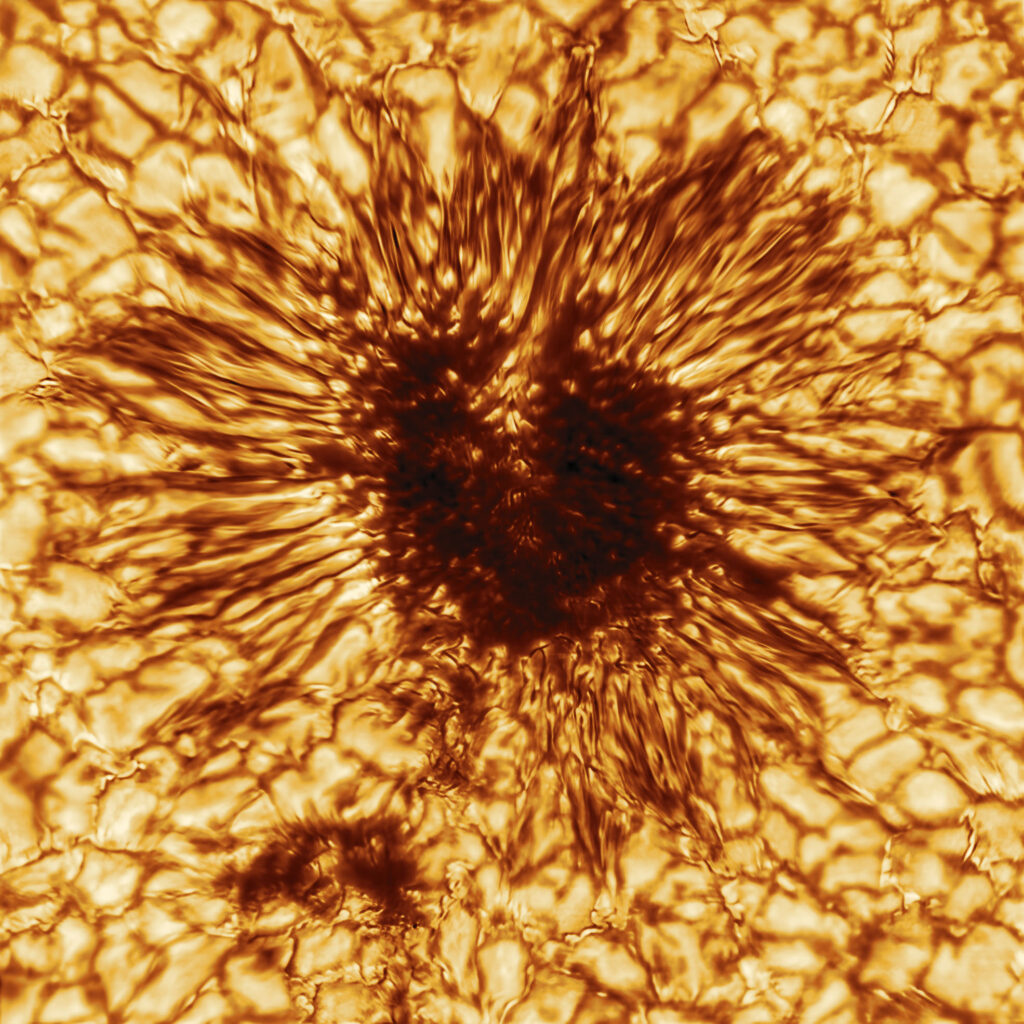
The Inouye Solar Telescope has released its first image of a sunspot. The new 4-meter telescope with adaptive optics in Hawaii has 2.5 times better resolution than any previous telescope. The picture shows magnetic structures as small as 20 km on the sun’s surface. Intense magnetic fields within a sunspot prevents the center from boiling up and bringing heat to the surface. The dark center of the spot is 7500 degrees F but that is 2500 degrees cooler than the rest of the sun’s surface. The pictured sunspot is 10,000 mi across (bigger than earth’s 8000 mile diameter). The sun goes through 12 year cycles of alternating polarity. The current solar minimum occurred in December 2019 and the upcoming solar maximum of activity is predicted to occur in mid-2025.
The discovery of what composes Dark Matter (DM) is something I hope occurs in my lifetime. DM has been postulated since Fritz Zwicky discovered in the 1930s that galaxy clusters didn’t have enough visible mass to keep them together. Then Vera Rubin saw that the orbital speed of stars in the Andromeda Galaxy needed much more mass than could be seen. At first scientists thought that small dark normal matter objects like MACHOS (massive compact halo objects) might be the solution, but the lack of microlensing events ruled them out. DM is 85% of matter of the universe and normal matter is only 15%. DM only shows itself thru gravity and doesn’t emit or absorb light. It also enables regular matter to condense into galaxies in a reasonable amount of time. There wouldn’t be life in the universe if DM didn’t exist. By 1980, the consensus was that it must exist. DM is extremely dilute. In the volume of the entire earth, there would only be about a squirrel’s mass of it. It extends about 10 times farther than the visible portion of the Milky Way. So there is a million light-year diameter spherical halo of DM around the 100,000 light-year disk of our galaxy. The web site has a nice diagram of potential candidates for DM. The older WIMP (weakly interacting massive particle) searches have so far come up empty. A new thought is that the DM particle is something between an electron and proton’s mass. The older searches used vats of cleaning fluid in mines and ultra-cold crystals but the search for these lighter DM particles will have to use new detectors. On the heavier side of the search spectrum, astronomers are starting to look at mini-black holes. Physicists are considering even lighter particles as possibilities. Neutrinos are not considered a good candidate for DM because they move too quickly (hot DM). Scientists want a cold DM particle (slower moving). Searching for lighter DM particles needs new detectors looking for more subtle effects. The sub-electron mass detector, Sensei, is checking for spurious electrons in a silicon chip. The Tesseract is looking for sound waves in a silicon chip. The device could eventually detect particles with 1/1000 that mass of an electron. Going lighter and lighter you eventually come to the axion particle. The ADMX detector is looking for axions decaying into pairs of photons inside powerful magnetic fields. The axion is the lightest particle, it is only 1/1000 of a trillionth of a trillionth of an electron’s mass. Astronomers are looking for light bending by clouds of dark matter. Scientists haven’t completely given up on their older experiments looking for WIMPs. They are increasing the probability of their searches by increasing the size of their detectors. A new 4 ton tank of xenon has started a 2 year run in Italy and South Korea has the cosine-100 experiment, with its larger sized sodium iodide crystals, trying to confirm the seasonal claim of the DAMA experiment in Italy. DAMA claims they see a different frequency of DM events based on whether the earth is going with or against the flow of DM as the earth circles the sun. No other experiment has been able to reproduce this effect.
Keith had sent me this article trying to guess what the new Biden Administration would do with the US space program, so we put the question to the MASS members. The article states that climate change is the 4th priority of the new administration, so they think the study of earth will be prioritized over going back to the moon. I think the recent successes that China has had on the moon might keep the US moon program going as a high priority. The MASS members hope that Biden keeps things relatively the same. One of the disadvantages of the US over a dictatorial regime like China, is that we often change direction every 4 to 8 years when a new President comes into office. The Chinese can stick to plans of 10 years or more because the political leader is around much longer. One of the former NASA deputy administrators, Lori Garver, says the goal of landing people on the moon by 2024 was stupid. NASA’s original goal was 2028 and Vice-President Pence just cut 4 years off that without any logic. Possible successors to NASA Administrator Bridenstine include Wanda Austin, the former president and chief executive of The Aerospace Corporation, Pam Melroy, a former astronaut who later held positions at the FAA and DARPA and Wanda Sigur, the former vice president and general manager for civil space at Lockheed Martin. Another possibility is Rep. Kendra Horn (D-Okla.), chair of the House Science Committee’s space subcommittee, who lost her bid for a second term in the November 3 election. My recollection of Horn is that she is a Boeing and SLS proponent. I’d prefer someone with more “commercial space” slant.
Another article suggests that the Biden administration should not undo progress made in space policy during the Trump presidency. But they urge the incoming leader tone down the militaristic rhetoric surrounding space and pay more attention to practical matters like the procurement of next-generation technologies. The Secure World Foundation’s, Azelton, cautions against making space policy decisions based on anti-Trump backlash. Trump’s space initiatives such as the establishment of the National Space Council and NASA’s program to return to the moon have helped advance national interests, says the report. But it points out that Trump is leaving major unfinished business. “The rapid growth in new actors conducting space activities, an increasing number of active satellites and debris objects, and the growing potential for conflict create both opportunities and challenges that require timely policy responses. Victoria Samson, director of the SWF Washington office, says the Trump administration’s politically charged rhetoric on the U.S. Space Force has alarmed civilian agencies and organizations around the world concerned about space security. Every discussion about the Space Force is centered around the idea of space “as a warfighting domain,” Samson says. Even though Space Force officials have insisted that their goal is to deter conflict, “for the average person, the rhetoric is about war. It reinforces a negative understanding of what the Space Force is trying to do. The White House’s insistence on American “space dominance,” which does not appear in the official policy documents, and linking the Space Force to human space exploration has “created consternation, confusion, and apprehension internationally about the intended goals of the U.S. Space Force,” the report says. A key reason Congress pushed to establish a Space Force was growing frustration that space programs were scattered around many organizations across the military and the intelligence community, says Samson. She would like to see Biden’s Pentagon focus on “the problem the Space Force was created to solve,” which is the management of space procurements. In that same light, I think using the ISS to stage Mike Hopkins induction into the Space Force is another “bad message” sending event.
Northrop Grumman has completed preliminary design of the Lunar Gateway Habitation Module. The module is based on the Cygnus supply craft and goes by the name Habitation and Logistics Outpost (HALO). It will serve as astronaut living quarters during lunar missions. It will also serve as the docking hub for vehicles such as the Orion spacecraft and can sustain 4 astronauts for up to 30 days. It is scheduled to launch in 2023.
Things haven’t been going smoothly for the much delayed and expensive SLS rocket and Orion capsule from NASA. The “Green Run” which is to be a full test fire of the first stage of the SLS rocket was scheduled for the week of December 21. This was to be 2 weeks after a full wet dress rehearsal (WDR) during which the rocket would be fully loaded with liquid hydrogen and oxygen. But on December 7 as NASA started the WDR tanking test, problems early in the liquid oxygen (LOX) loading stopped the test. Instead of getting the LOX down to -290.57 degrees F, they only could chill it down to -286.67 degrees. So they decide to pause and find out why. A date for another try has not been announced. At least, they also got a little experience with the liquid hydrogen loading which is usually more problematic because hydrogen tends to leak easier through fittings and is handled at an even lower temperature. When fully executed a full WDR will count down to T-33 seconds of the rocket’s countdown procedure. A test fire of the first stage is still tentatively possible before Christmas if the WDR is completed soon. NASA says the launch of Artemis 1, the first flight of SLS and Orion in an unmanned mode, is still scheduled for November 2021.
The other issue was with the Orion capsule waiting in Florida for mating with the SLS rocket. It had a power unit fail that might take months to fix by Lockheed Martin. The corrective procedure could require removing Orion from the European service module. That could take a year. Another option is to go thru panels that weren’t designed to be removed, that could take 4 months. A third option is to fly Orion as is, it just wouldn’t have a back-up power unit for redundancy. At least the Artemis 1 flight is unmanned. I can’t imagine SpaceX ever saying that it would take a year to fix something on the Dragon capsule.
On of my favorite vehicles, the Dream Chaser, has had its first supply mission to the ISS delayed until 2022. Sierra Nevada the manufacturer cited work force issues due to the pandemic. Dream Chaser is joining the cargo Dragon from SpaceX and the Cygnus module from Northrop Grumman as the 3rd US supply craft for the second round of Commercial Cargo to the ISS.
In an interesting turn of fate, it was reported on November 26, 2020, that Boeing has hired the SpaceX’s lead software developer. I guess when the first Starliner test was cited by NASA for 80 software issues, they knew they better try a new methodology.
The ISS has had a troublesome and long lasting issue with a small air leak. The Russians originally said it must be on the US side of the space station, but eventually using floating tea leaves, it was narrowed down to the Zvezda module. One of the cosmonauts repaired it with a patch made from rubber and aluminum foil but apparently it didn’t work Sometimes the Russians don’t seem to have the best technology. I hope chewing gum isn’t involved on the next attempt.
Spaceflight seems to be more harmful than previously thought. Six types of change were listed: 1) oxidative stress (excessive accumulation of free radicals in the body’s cells); 2) DNA damage; 3) dysfunction of the mitochondria; 4) changes in gene regulation; 5) alterations in the length of telomeres (ends of chromosomes, which shorten with age) and 6) changes in the gut microbiome. Of the 6 changes, the biggest and most surprising one for scientists was mitochondrial dysfunction. Mitochondria play a critical role in producing chemical energy necessary to keep cells functional. Dozens of astronauts were able to characterize these changes. Mitochondrial suppression helps explain how immune system deficiencies, disrupted circadian rhythm and organ complications occur in astronauts bodies. Scott Kelly, who stayed almost 1 year on the ISS, had his telomeres lengthen in space but they got even shorter than his pre-flight state when he returned to earth. Other astronaut studies confirmed the effect. Scientists think that oxidative stress might be behind the change because climbers of Mount Everest have it too. One of the strangest finding was that astronauts’ gut microbiomes managed to bring space microbes found on the ISS back to Earth. Physiologically, scientists think it’s safe to send people to Mars and back. They also believe that precision medicine based on your genetics could protect astronauts against the effects of microgravity and radiation.
SpaceX plans to have a fleet of their new Dragon2 capsules. Right now there are 2 Dragons docked to the ISS. One from the CREW1 mission (C207 Resilience) which launched Nov 15, and brought 4 astronauts to ISS. and the other from the cargo CRS-21 mission (C208). Putting 4 astronauts in a capsule was a new record for a capsule. The Space Shuttle was able to carry 8 but it wasn’t a capsule. The CREW1 capsule will also stay docked to the ISS for up to 180 days which will be a record time for a US capsule in space. One of the Apollo capsules used for Skylab was in space for 84 days. Besides the DM-2 and CREW1 capsules, SpaceX plans to build 3 more Dragon2 craft for carrying crew. On the cargo side, they are building 2 more capsules in addition to the current CRS21 craft. SpaceX intends to have a fleet of 3 cargo and 5 crew capsules. Each of the capsules is capable of 5 flights. SpaceX plans 6 more Dragon missions after CREW1 and CRS-21 before February 2022. The missions include, 2 NASA Crew missions (CREW2 & CREW3), 4 cargo missions to ISS and 1 private astronaut mission for Axion Space with Tom Cruise and company. The record for a Dragon 1 capsule turnaround was 15 months. The CREW2 mission in March 2021 will use the C206 capsule (Endeavour) that was used on the DM-2 mission in May to August 2020. That would be a new record of 8 month turnaround. The C205 capsule that was used on in-flight abort test is not included in the fleet of 8 Dragons.
CRS-21 cargo Dragon launched on December 6, 2020. The mission used a Falcon 9 booster for the 4th time and used a new Dragon2 capsule. Dragon contained 6550 lbs of cargo including the Bishop airlock and numerous biological experiments like brain organoids to study how brain synapses function in 0-G environment. It was the 100th successful Falcon 9 launch, the 68th booster landing, and the 47th landing on a barge It took off from pad 39A at Kennedy Space Center. 39A is the pad with the crew access arm, so loading of supplies was much easier and could be done much later than before. The new Dragon2 docks autonomously to ISS rather than needing an astronaut to grab it with the robotic arm to berth it to the station. This was the 1st use of Dragon2 for cargo. The Bishop Airlock should increase the amount of small satellites than can be deployed from the ISS and make moving equipment from inside to outside the ISS much easier. It is certified for 100 cycles of being attached to the ISS and then detached. The CRS-21 Dragon departs after 35 days on ISS (January 10, 2021) so Bishop will be deployed from the Dragon trunk area before then.
Another batch of 60 SpaceX StarLink satellites were launched on November 24, 2020. That brings the total to 955 launched and 901 currently in orbit. SpaceX has begun a beta program to test its StarLink internet service. I watched an interesting YouTube video where a guy tore apart his StarLink dish to see what was inside and how it worked. It was a destructive process. SpaceX only charges its beta users $500 for the dish and router but I’ve heard that the startup equipment costs $1000-2400. SpaceX plans Phase 1 of StarLink to have 1584 satellites in 72 orbital planes with 22 satellites each in a 550 km orbits. OneWeb, who recently emerged from bankruptcy with the help of the British government, plans to launch 650 satellites for their Internet from Space network. But they have also asked the FCC for 48,000 additional satellites(?). They launch 34 satellites at a time using Soyuz rockets and have 68 now in orbit. For the StarLink launch this was the first time a Falcon 9 booster was used for 7th time. The December 2020 Astronomy Magazine says the $641 million Vera Rubin Telescope (formerly the Large Synoptic Telescope), could have 30% of its images contaminated by the 42,000 Starlink satellite constellation. Bright light tracks can cause electronic crosstalk between different segments of camera’s pixels causing a false source of light called artifacts. These can be removed by computer but only if fainter than 7th magnitude. The removal could cause systematic errors that might throw off some of the science programs like the all-sky survey’s Dark Energy and Dark Matter studies. Actions that would help are, keep the satellites as dim as possible, keep them at a lower orbit so that they are illuminated for less time (orbits <373 mi or <600 km) and make accurate tracking data available so the satellites could be avoided. It other interesting news, SpaceX just got $885 million over a 10 year period from the US government to support providing rural Internet service.
Another rocket company, Rocket Lab launched its 16th mission on November 20th from New Zealand. Rocket Lab uses its Electron rocket with a small third stage motor called a “kick stage” to deploy 29 smallsats (24 Spacebee’s of .25U size, and 2 sats for Unseenlabs, 2 sats for Dragracer, and an APSS-1 cubesat) into a 500 km sun-synchronous orbit. In addition they had a 3D printed titanium mass simulator in the form of a 15 cm tall in the form of a gnome dubbed, Gnome Chompski (a character in Half-Life series of video games). Rocket Lab recovered the first stage of the Electron rocket 400 km downrange in the water after it came down on a parafoil. Eventually, they’ll try to catch it in mid-air with a helicopter. They will soon also be launching from Wallops Island, Virginia. The Electron rocket is 17m (56 ft) tall, 1.2m (4 ft) diameter, and has a payload capacity of 225 kg (496 lb). It costs $5 million, which works out to $22,222/kg of payload. The Falcon 9 rocket which is 70m (230 ft), 3.66m (12 ft) diameter and has a payload capacity of 22,800 kg (50,265 lb) when the first stage is expended or 15,600 kg (34,400 lb) when the first stage is recovered. Falcon 9 costs $62 million when expended and $50 million when reused. That works out to $2719/kg of payload when expended or $3205/kg when reusable. So SpaceX is about 10 times cheaper per pound. The notable thing about the Electron rocket is that its Rutherford engines are completely 3D printed and the fuel pumps are powered electrically with batteries rather than with turbopumps powered by the rocket’s fuel. Rocket Lab can manufacture an engine in 72 hours. They originally thought their rocket was so cheap it wouldn’t be worth recovering but now they think recovery will allow them to launch even more frequently. Peter Beck, the head of Rocket Lab, wants to use his “kick stage” called Photon to send a probe to study Venus’s atmosphere. They also have been contracted by NASA to use the Photon to send the CAPSTONE cubesat mission in 2021 into a rectilinear lunar halo orbit so that the space environment for the Lunar Gateway can be evaluated.
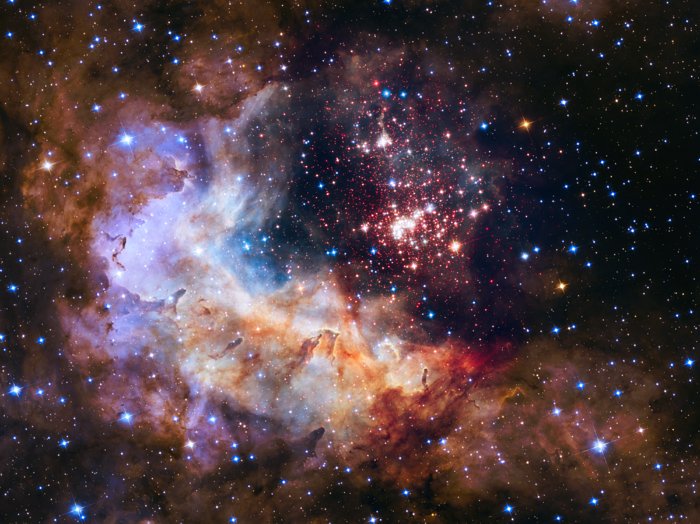
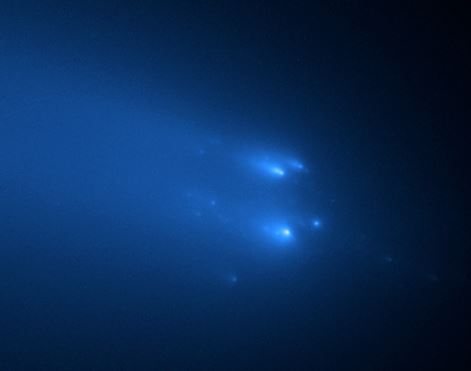
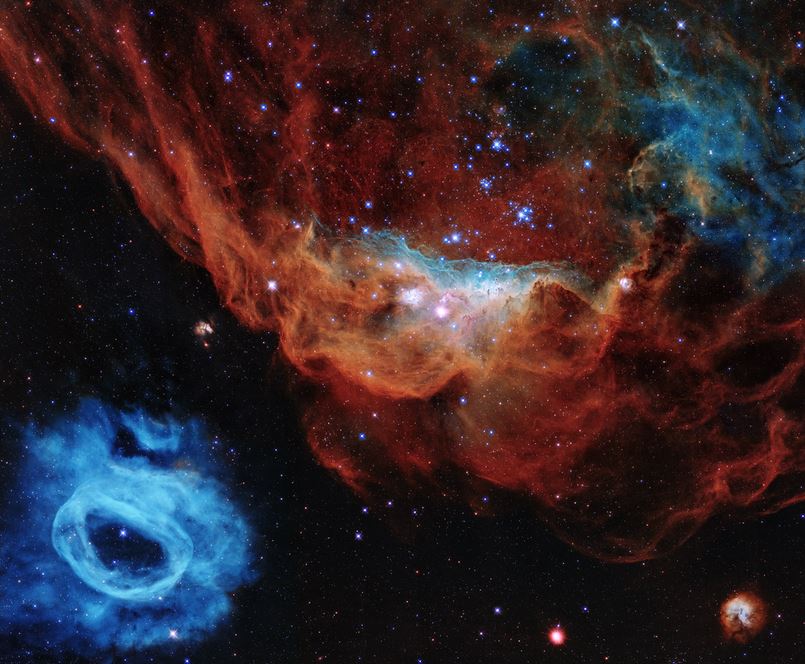
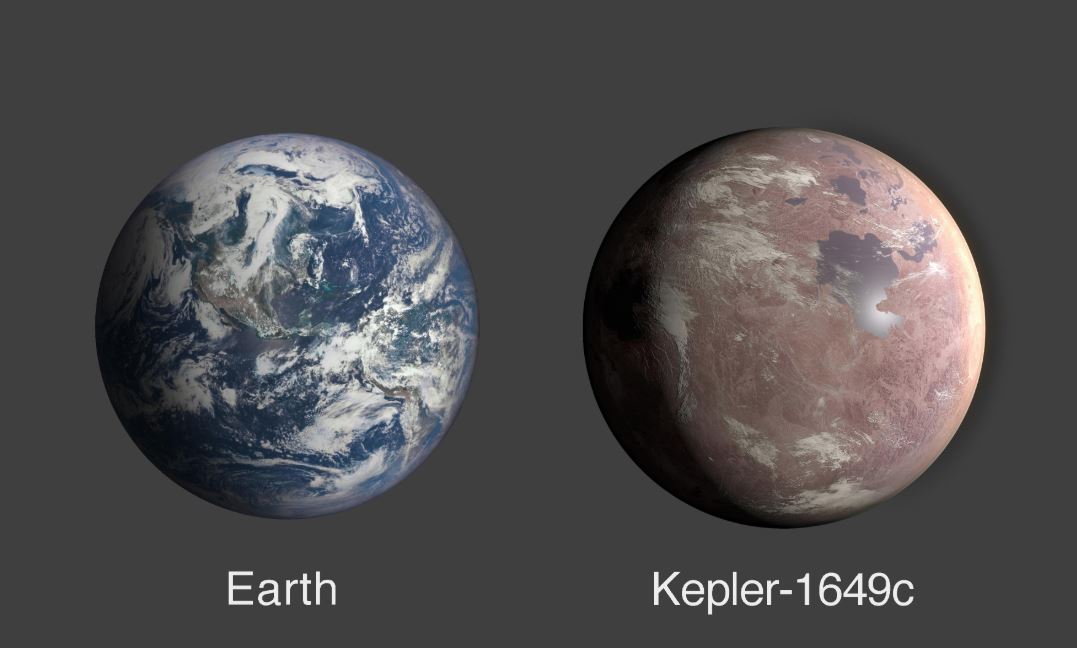
Recent Comments